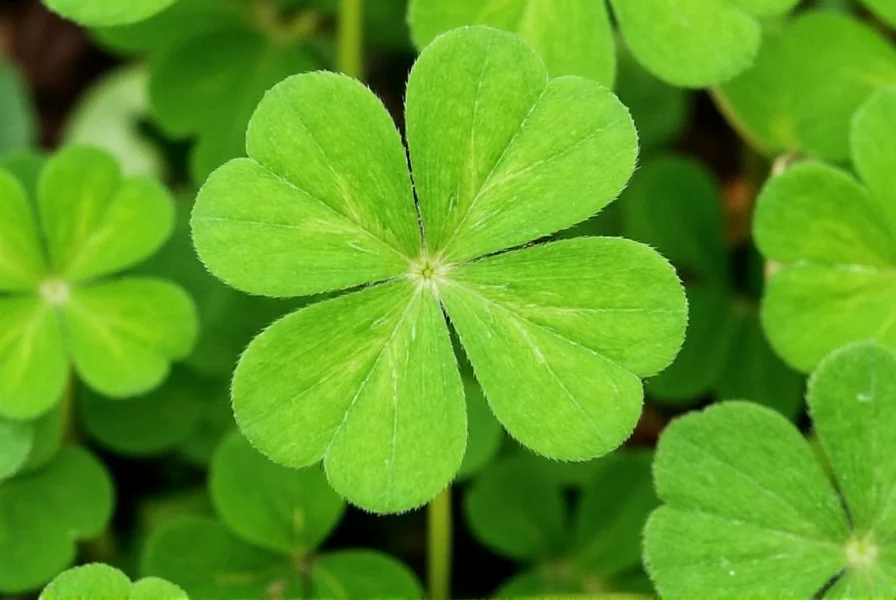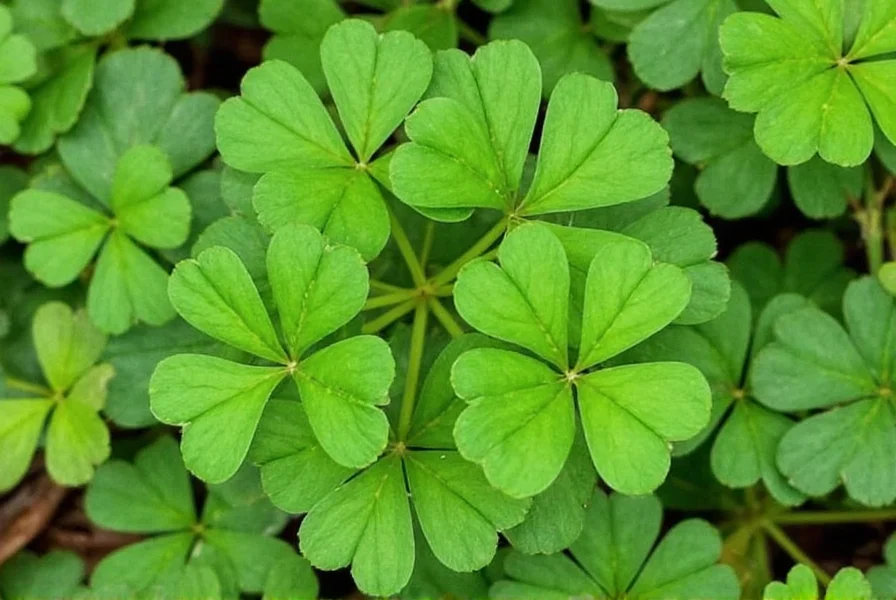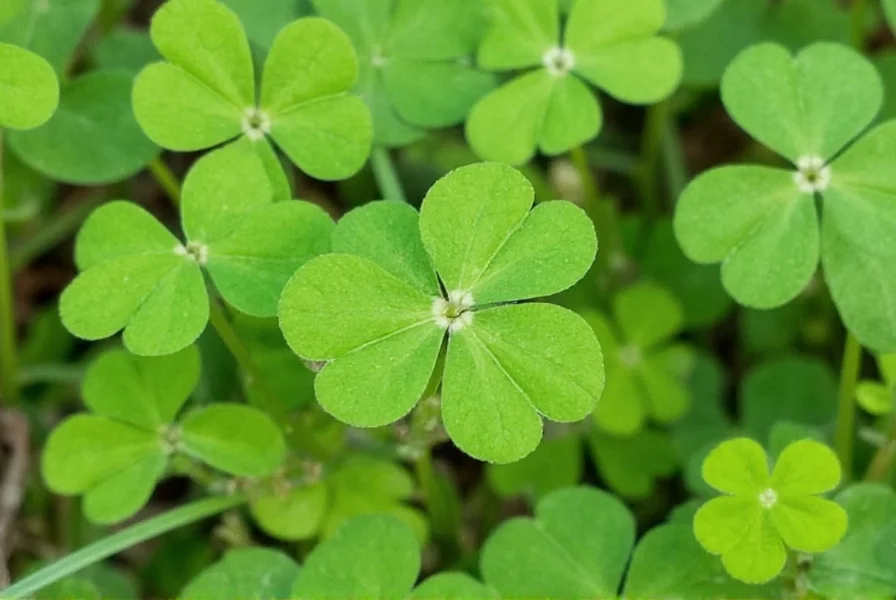Dutch clover has gained popularity among eco-conscious gardeners seeking sustainable alternatives to conventional lawns. This resilient plant establishes quickly, tolerates various soil conditions, and naturally enriches soil through nitrogen fixation. Understanding its specific characteristics helps determine whether it's suitable for your landscaping needs.
Key Characteristics of Dutch Clover
Dutch clover distinguishes itself from other clover varieties through several defining features. Its creeping growth habit creates a dense mat that effectively suppresses weeds while requiring less water than traditional grass lawns. The plant produces small white flower heads that mature to a pinkish hue, providing valuable nectar sources for bees and other pollinators throughout the growing season.
Unlike microclover, Dutch clover has slightly larger leaflets and flower heads, typically measuring 1-2 inches across. It establishes more quickly than microclover but may require slightly more maintenance to keep it at a uniform height. Dutch clover's root system develops shallow but extensive rhizomes that help stabilize soil and prevent erosion on slopes and banks.
| Characteristic | Dutch Clover | Microclover | Regular White Clover |
|---|---|---|---|
| Height | 4-8 inches | 3-6 inches | 6-12 inches |
| Leaf Size | Medium | Small | Large |
| Flower Size | Medium | Small | Large |
| Mowing Frequency | Monthly | Rarely | Weekly |
| Foot Traffic Tolerance | Moderate | Low | High |
Benefits of Incorporating Dutch Clover in Your Landscape
Homeowners choosing dutch clover lawn alternatives discover multiple environmental and practical advantages. This plant requires approximately 75% less water than traditional Kentucky bluegrass once established, making it an excellent choice for drought-prone regions. Dutch clover's nitrogen-fixing capabilities eliminate the need for synthetic fertilizers, reducing both costs and environmental impact.
Unlike grass lawns that turn brown during summer heat, dutch clover planting maintains its green appearance with minimal irrigation. Its shallow root system helps break up compacted soil while preventing erosion on slopes. The continuous blooming cycle supports local pollinator populations, contributing to biodiversity in urban and suburban environments. For those seeking a chemical-free lawn solution, dutch clover control methods focus on natural maintenance rather than herbicides.

Growing Conditions and Establishment
Successful dutch clover seeding depends on proper soil preparation and timing. The ideal planting window occurs in early spring or fall when temperatures range between 50-75°F (10-24°C). Prepare the area by removing existing vegetation and loosening the top 2-3 inches of soil. Dutch clover thrives in well-drained soils with pH between 6.0-7.0 but demonstrates remarkable adaptability to various soil types.
When establishing dutch clover lawn from seed, use 2-3 pounds per 1,000 square feet for new installations or 1-2 pounds for overseeding existing lawns. Keep the soil consistently moist until germination occurs in 7-15 days. Unlike grass seed, dutch clover seeds require light for optimal germination, so avoid burying them deeply. For best results in dutch clover maintenance, mow monthly to 2-3 inches to encourage lateral growth and prevent flowering if desired.
Practical Applications and Considerations
Dutch clover serves multiple purposes beyond traditional lawn replacement. Gardeners use it as a living mulch between vegetable rows, where it suppresses weeds while enriching soil. Its moderate foot traffic tolerance makes it suitable for low-traffic pathways and between stepping stones. In orchards and vineyards, dutch clover planting provides ground cover that regulates soil temperature and moisture.
Consider these factors when implementing dutch clover control in your landscape: While generally low-maintenance, Dutch clover may require supplemental watering during extended droughts. It performs poorly in dense shade, requiring at least 4 hours of direct sunlight daily. Some homeowners find the flowers attract bees, which could be a concern for those with allergies. Dutch clover vs microclover comparisons often reveal Dutch clover's superior establishment speed but slightly higher maintenance requirements.

Managing Dutch Clover in Different Environments
Dutch clover adapts well to various climates but requires specific management approaches depending on your region. In northern climates (USDA zones 3-6), it may go partially dormant during winter but typically recovers vigorously in spring. Southern gardeners (zones 7-10) should plant in partial shade to prevent summer stress. Coastal regions benefit from Dutch clover's moderate salt tolerance.
For those transitioning from grass to dutch clover lawn, the process involves killing existing turf, preparing the soil, and seeding at the recommended rate. Overseeding existing lawns with dutch clover planting creates a more resilient, drought-tolerant turf alternative. Regular mowing encourages denser growth, while occasional nitrogen-rich compost applications can boost establishment in poor soils. Understanding dutch clover maintenance requirements ensures long-term success in your specific growing conditions.
Frequently Asked Questions
Is Dutch clover the same as white clover?
Dutch clover is a specific cultivar of white clover (Trifolium repens) bred for its lower growth habit and smaller leaves. While all Dutch clover is white clover, not all white clover qualifies as Dutch clover. Dutch varieties typically grow 4-8 inches tall compared to standard white clover's 6-12 inch height.
Does Dutch clover come back every year?
Yes, Dutch clover is a perennial plant that returns each year in USDA hardiness zones 3-10. It establishes a persistent root system that survives winter dormancy in colder climates and continues growing through multiple seasons with proper care.
How do I prevent Dutch clover from taking over my lawn?
To manage Dutch clover spread, maintain regular mowing at 2-3 inches to prevent flowering and seed production. Avoid nitrogen fertilization, which encourages grass growth over clover. For targeted control, use a selective broadleaf herbicide containing triclopyr, though this contradicts the eco-friendly benefits of maintaining clover.
Can you walk on Dutch clover lawns?
Dutch clover tolerates moderate foot traffic but performs best in low-traffic areas. It handles occasional walking better than microclover but less effectively than traditional turf grasses. For pathways or high-traffic zones, consider mixing Dutch clover with turf-type tall fescue for improved durability.
Does Dutch clover attract bees?
Yes, Dutch clover produces abundant white flowers that attract honeybees and native pollinators. The flowering period typically occurs from late spring through summer. If bee attraction is a concern, regular mowing at 2-3 inch height prevents flowering while maintaining the green foliage.











 浙公网安备
33010002000092号
浙公网安备
33010002000092号 浙B2-20120091-4
浙B2-20120091-4